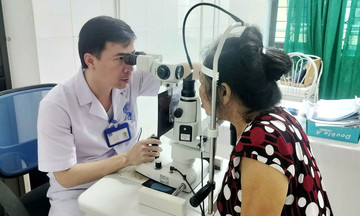Conjunctivitis, commonly known as pinkeye, can cause the eyes to turn pink or red. According to the US Centers for Disease Control and Prevention (CDC), waking up with crusty eyes is a hallmark of pinkeye, along with swelling, pus, and itching. The condition is usually caused by viruses, bacteria, or allergens entering the eye and is more common in children than adults.
Bacterial and viral conjunctivitis are highly contagious. To prevent the spread or reinfection, use a clean towel or tissue each time you wipe your face and eyes, wash your hands frequently, and avoid touching your eyes.
Dry eye syndrome, according to the US National Eye Institute, occurs when the eyes don't produce enough tears to maintain moisture. Symptoms include burning, redness, light sensitivity, and blurred vision. This can be exacerbated by sleeping with a fan on overnight. Some side-sleepers tend to sleep with their eyes slightly open, which can also lead to dryness and redness upon waking.
Sleep apnea is a common sleep disorder that causes breathing to repeatedly stop and start during sleep. Typical symptoms include loud snoring and excessive daytime fatigue, which can lead to physical health problems and affect the eyes. People with this syndrome often use a continuous positive airway pressure (CPAP) machine to help them breathe easier while sleeping. However, the air from the machine can dry out the eyes, causing redness in the morning. Applying lubricating eye ointment before bed can help alleviate this.
Seasonal allergies can trigger symptoms like coughing, sneezing, nasal congestion, itching, and red eyes. If you have allergies, your eyes might become swollen and irritated, especially when exposed to allergens like pollen, dust, mold, or pet dander.
If the skin around your eyes is red in the morning, the culprit could be a stye. People with chronic acne or rosacea may also experience eyelid irritation due to the buildup of oil, dead skin, and hair cells.
In rare cases, waking up with bloodshot eyes can be a sign of glaucoma. Acute angle-closure glaucoma is a serious condition that occurs when eye pressure rises very quickly, causing eye redness and severe pain. Eye pressure measures the fluid pressure inside the eye, similar to how blood pressure measures the force of blood against artery walls. Glaucoma creates high eye pressure, which can damage the optic nerve and lead to vision loss and eye redness.
A subconjunctival hemorrhage occurs when a blood vessel in the eye breaks, causing blood to pool in the white of the eye. This is usually not serious. If you rub your eyes too hard, blink forcefully, sneeze, or have itchy eyes while sleeping, the surface blood vessels in your eyes can rupture. The most obvious sign of a subconjunctival hemorrhage is waking up with one bloodshot eye, but without pain or vision changes.
This condition typically clears up within two weeks without treatment. If your eyes are irritated, you can use eye drops or artificial tears to soothe them. However, eye redness accompanied by pain or other concerning symptoms, such as vision loss, should be addressed immediately to rule out glaucoma.
Bao Bao (Livestrong)
| Readers can submit questions about eye diseases here for doctors to answer. |












